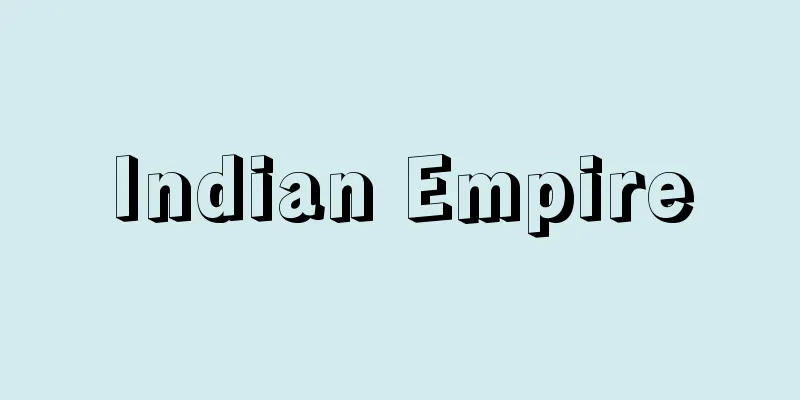Indian Empire

|
The name of India during the period when it was directly ruled by the British. From January 1, 1877, the British Queen was called the Empress of India, and this period lasted until the independence of the Union of India and Pakistan (1947). It is also called British India, but since Burma (now Myanmar) was once a state of India, it is more correct to call it the Indian Empire. From the second half of the 18th century, the British East India Company expanded its influence throughout India, and consolidated its occupation and control of important bases in India through the Mysore Wars, the Maratha Wars, and the Sikh Wars. On the other hand, Indians were increasingly dissatisfied with these British invasions, and in 1857 the Indian Mutiny broke out. As a result, after the end of the rebellion, Britain transferred control of India from the East India Company to the Secretary of State for India and began direct colonial rule. They appeased the feudal lords, the former ruling class of India, and cleverly divided and ruled while preserving the self-government system of village communities and the caste system. Economically, as a result of colonization, India generated such profits that it was called "the greatest jewel in the British crown." However, as national capital grew, the Indian independence movement intensified, and during World War II, the British government was forced to promise India independence. After the war, on August 15, 1947, the two dominions of the Union of India and Pakistan were established, marking the end of the Indian Empire. → Related articles Indochina | Indian Governance Act | South Asia Source : Heibonsha Encyclopedia About MyPedia Information |
|
英国が直接支配した時期のインドの呼称。1877年1月1日から英女王が〈インド女帝〉を称し,この時からインド連邦およびパキスタンの独立(1947年)に至る期間にあたる。英領インドともいうが,ビルマ(現ミャンマー)がインドの1州とされていた時期もあるので,インド帝国と呼ぶほうが正しい。18世紀後半以降,イギリス東インド会社はインド各地にその勢力を拡大し,マイソール戦争,マラーター戦争,シク戦争などを通じてインドの重要拠点の占領支配体制を固めた。反面,こうした英国の侵略に対するインド人の不満も高まり,1857年にはインド大反乱が起こり,そのため英本国は反乱終結後,インドの支配権を東インド会社からインド大臣へと移し,直接的な植民地支配に乗り出した。インドの旧支配層である封建領主を懐柔し,村落共同体による自治制度やカースト制度を温存しつつ,巧妙な分割支配を行った。経済面でもその植民地化が進められた結果,インドは〈イギリス王冠に輝く最大の宝石〉といわれるほどの利益を生んだ。しかし民族資本の成長とともにインド人の独立運動も激化し,第2次大戦に際しては英政府もインドの独立を約束せざるを得なくなる。そして戦後の1947年8月15日にはインド連邦とパキスタンの2自治領が成立し,インド帝国はその終りを告げた。 →関連項目インドシナ|インド統治法|南アジア 出典 株式会社平凡社百科事典マイペディアについて 情報 |
Recommend
Natsui River
A river that flows through the southeastern part ...
Notes on the primitive system of vowels in Indo-European languages
...In addition, since 1955, the unpublished manus...
Celosia argentea (English spelling) Celosiaargentea
...For cut flowers, flower beds, and potted plant...
Aton
A sun god in Egyptian mythology. The name Aton mea...
Martes melampus melampus (English spelling) Martes melampus melampus
…[Yoshiharu Imaizumi]. … *Some of the terminology...
Taiwan
...The black-necked cobra N. nigricollis and the ...
Chinchilla
A rodent mammal of the Chinchilla family. Also kno...
Underwear
…It is used for hygiene, warmth, body correction,...
Artesian well
…They are not classified by depth, but the former...
Gursky, H.
…X-ray astronomy began in 1962-63 when Americans ...
Irritable Bowel Syndrome
…Irritable bowel syndrome is also known as irrita...
Poetry and painting scroll - Shigajiku
A hanging scroll painting with a Chinese poem rela...
《Chemistry Outline》 - kagaku yoko
…He also studied the diffusion of liquids, named ...
Edozumi Sake Brewing Association
...Specifically, Nadame consists of the Upper Nad...
Sieve
A tool for separating substances by size. There ar...









